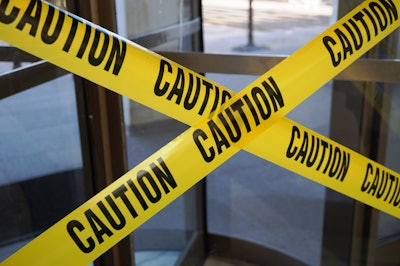
 Jessie Zeigler, Esq.
Jessie Zeigler, Esq. Crises happen. Whether it is a fire, explosion, chemical release, catastrophic injury, death or several of these all at once, the minutes, hours and days that follow a disaster are critically important in the years that follow. They can make or break a company or the financial strength of that company. In the heat of a disaster is the time to make a good first public impression, preserve critical evidence, ensure employees’ safety, avoid the complications of a similar crisis at another plant and respond responsibly to families of the injured or deceased — all while you are managing liability concerns.
Update or Develop a Crisis Response Plan
Do you have a plan? Surprisingly, some of the nation’s largest companies do not have a Crisis Response Plan, or they have one that has not been reviewed in years. The plan should clearly outline all of the steps to take when a crisis occurs, keeping in mind that many of those steps may occur simultaneously and different people need to be put in charge of different aspects of the plan. A plan should include items such as:
- A list of individuals who need to be notified, along with their relevant contact information or location of contact information (phone numbers — both work and mobile — and email). This list can include:
- Internal management
- Families of those injured (identify where emergency contact information is stored for all employees)
- Legal experts
- Public relations experts
- Governmental agencies
- Steps to ensure the area is safe, including:
- Put a stop to the initial crisis event, such as putting out a fire
- Eliminating any chemical exposure in the air
- Cordoning off any potentially dangerous areas
- Ensuring family members or media are not accessing the area
While not an exhaustive list, other steps that should be included in a Crisis Response Plan and how they should be managed are discussed below.
Internal Company Response
Ensure that those within the company who need to know are immediately notified. Each person may have a chain of other people who they need to notify. Make sure that the company’s public relations expert is immediately updated and helping to prepare the company’s public statements.
External Company Response
Notify your company’s legal counsel who will assist with handling the crisis in the days that follow, including investigating causation, preserving evidence, hiring experts, identifying and interviewing witnesses and managing the interactions with governmental authorities. Together with your legal counsel, determine whether any governmental agency needs to be notified, which will depend on the nature of your plant or industry and the crisis. If employees were killed or injured, OSHA notification is likely required. Depending on your industry, notification to the FDA, NHTSA or another governmental agency may be required. If there has been a chemical release, immediate EPA notification may be necessary (as well as OSHA).
Ensure Safety
While all of the notifications are being made, lock down the affected area and prevent entry of employees, family members and media to an area that may not be safe. Do you have other plants that use similar equipment to that involved that may be a concern? Notify any other plant managers and determine whether any equipment needs to be removed from operation while the investigation is being conducted. The last thing you want is to have a similar crisis strike at another plant while you are in the midst of handling the original incident.
Preserve the Scene
While the first priority is to secure the scene, the second priority is to ensure that the scene is not disturbed while the investigation is being conducted. Wait until your experts advise that it is now acceptable to move any evidence before proceeding. Your experts will also determine how evidence is to be moved, who needs to be notified of its movement, and how the evidence will be noted on a chain of custody document.
Are there any video cameras that may have captured what happened? Often video tapes are automatically set to be recorded over if they are not removed from the cameras and preserved. All pieces of machinery or equipment should remain in place so that photos can be taken to thoroughly document the scene, and/or your experts can ensure the proper collection, documentation and preservation of the evidence depicted. Equipment that was involved should not be repaired or discarded until approved by your legal experts.
Manage Cell Phone Photos/Videos
You do not want insensitive images of injured or deceased employees or the scene showing up in the media or on social media. Not only could this violate any employee’s or family’s personal privacy, it also risks publicly damaging the company and interfering with your messaging. Additionally, if later litigation erupts (as is likely), those employees will need to turn over their cell phones to have those photos/videos collected and produced as evidence in the case. Do you have a collective bargaining agreement that prevents you from policing cell phone photos or videos taken during a crisis? If so, work through those issues now and see what can be changed in this type of situation. Employees will not appreciate having their cell phones confiscated for data collection to the company’s attorneys. Text messages also may have to be collected, and a policy about texting should be included as part of your Crisis Response Plan.
Protect Your Brand
How the company handles a crisis determines its future — the morale of its employees, its perception in the community, its stock prices, and the opinions of governmental authorities investigating the situation. Be cooperative, have a consistent message, and show a caring attitude to any of the injured and their families. Also, demonstrate a commitment to safety, discovering what went wrong and preventing future crises.
Determine Any Other Notifications that May Need to Be Made
Are there other companies who may need to be notified of this event? For instance, is there a manufacturer of a piece of equipment you want to put on notice? Were any contractors on site whose companies need to be notified of the event and/or included in the investigation of the event?
Remember, the time to prepare for a disaster is now — not when it happens.
Jessie Zeigler serves as chair of the Products Liability & Torts Practice Group at Bass, Berry & Sims PLC.






















